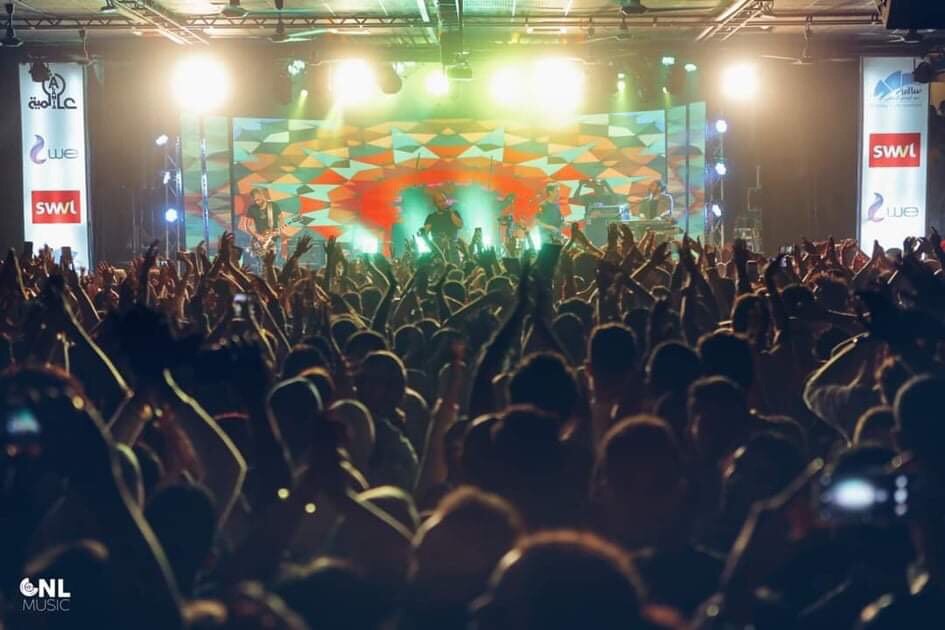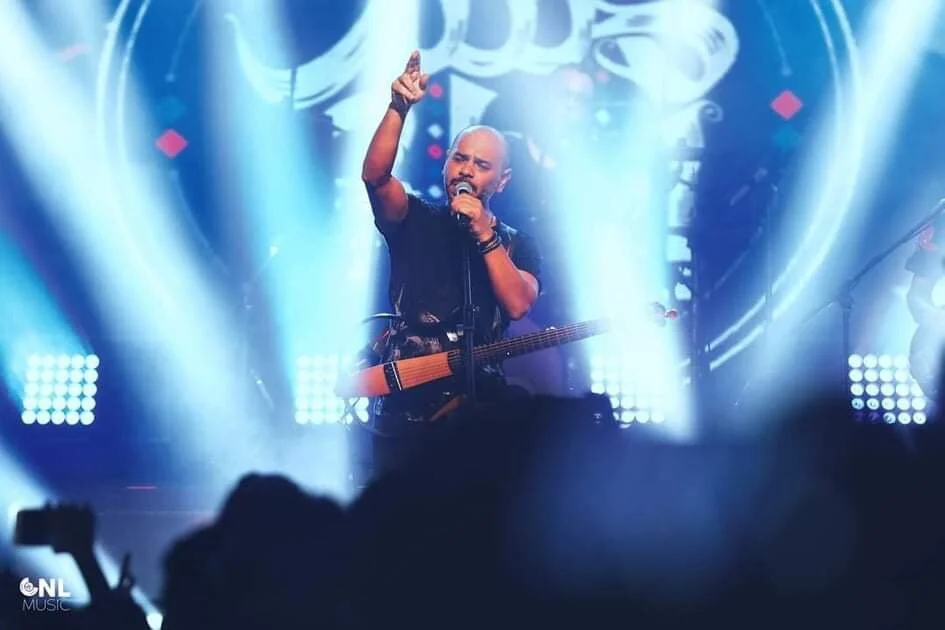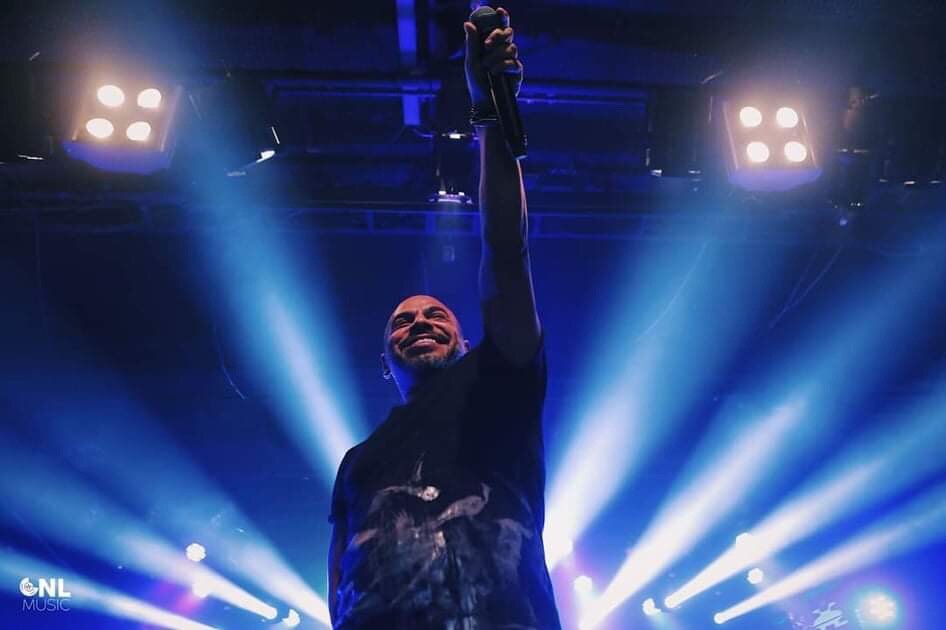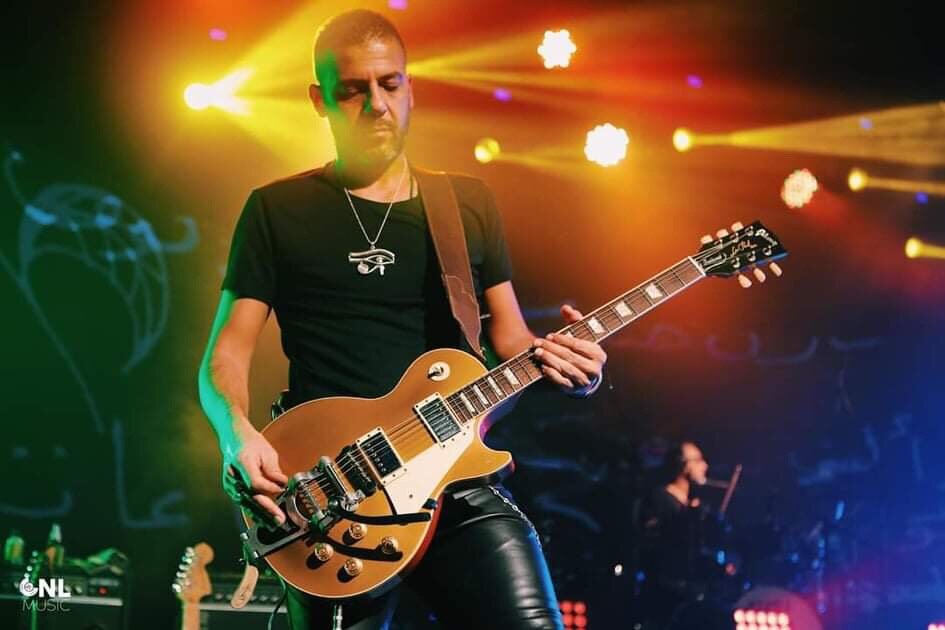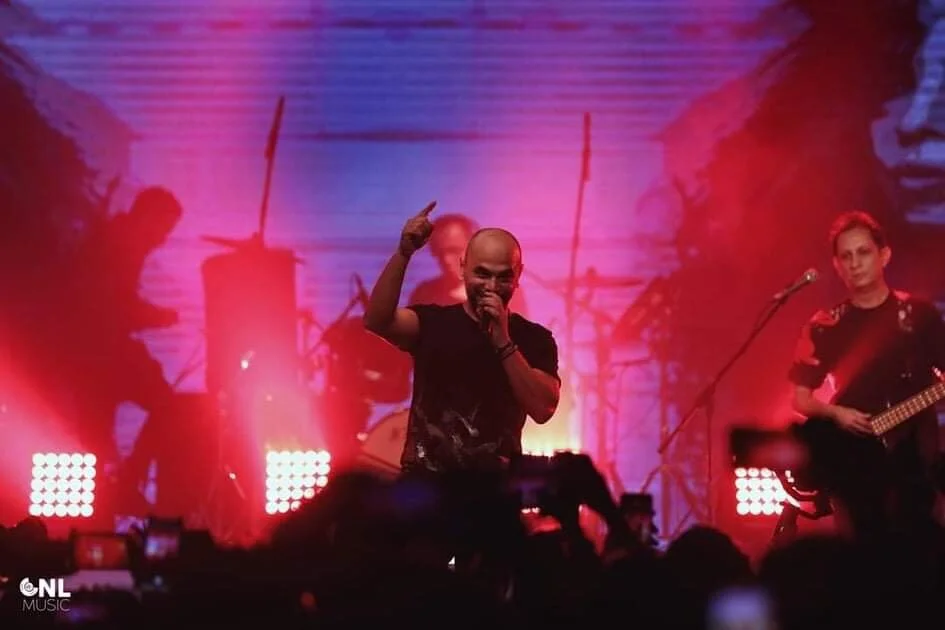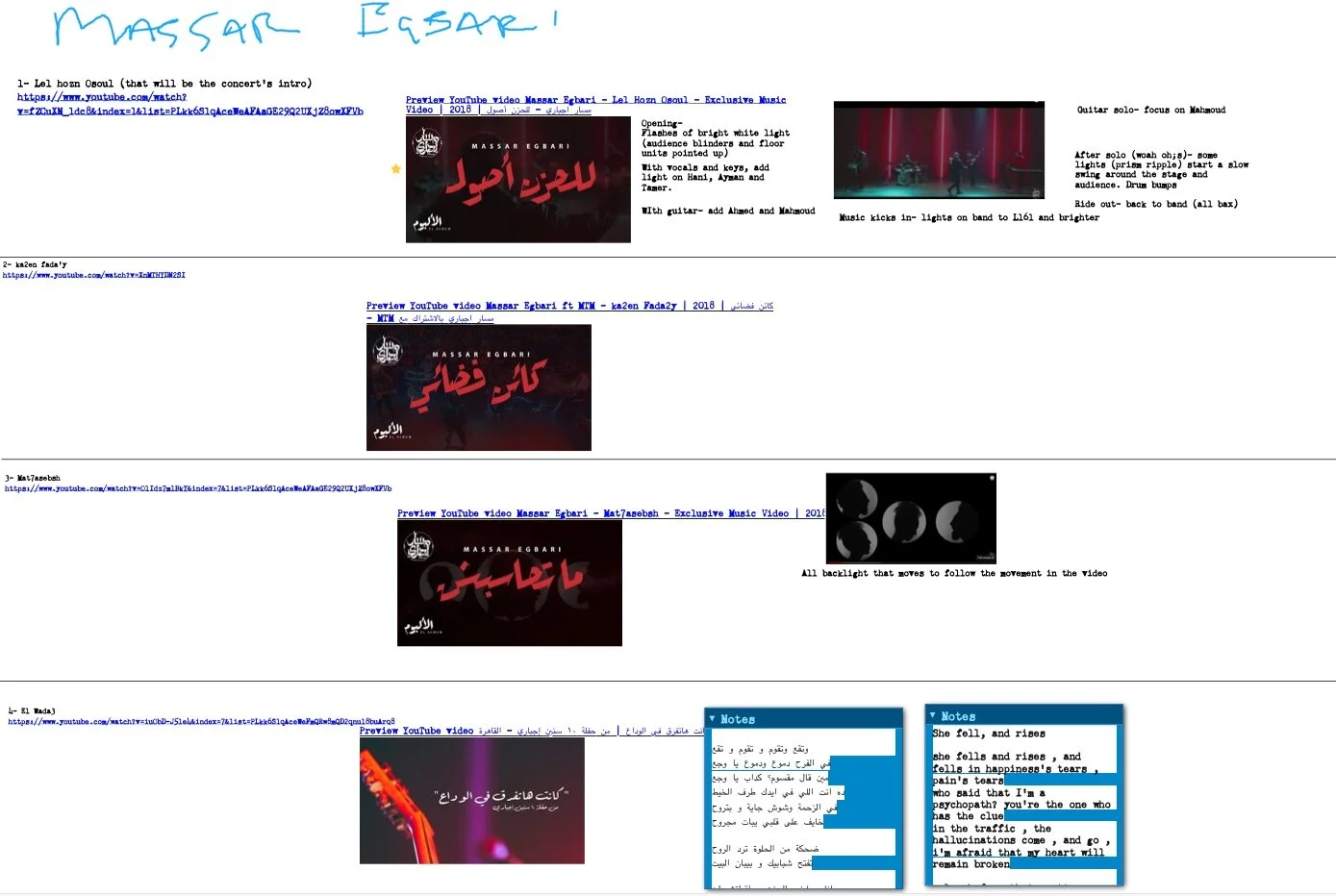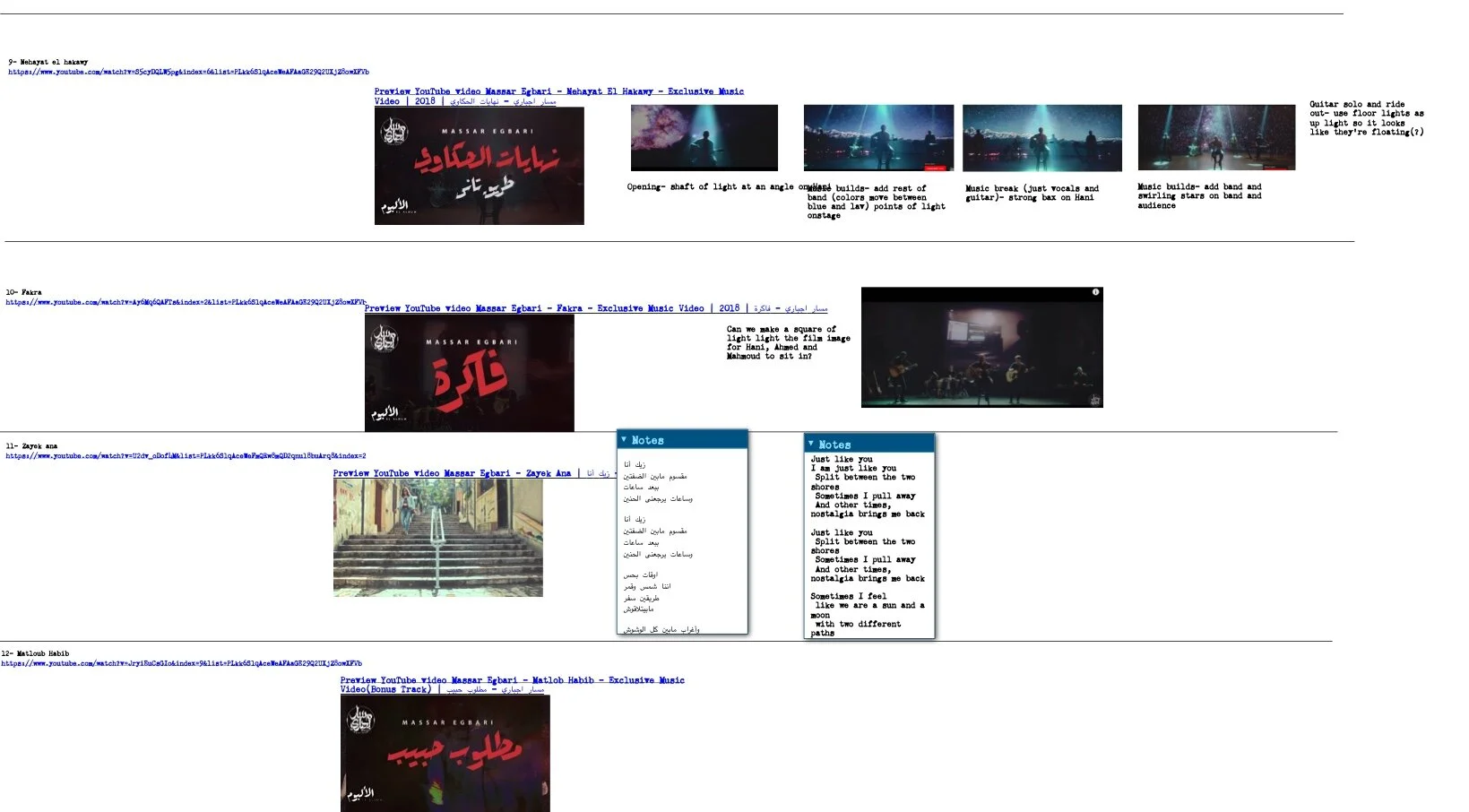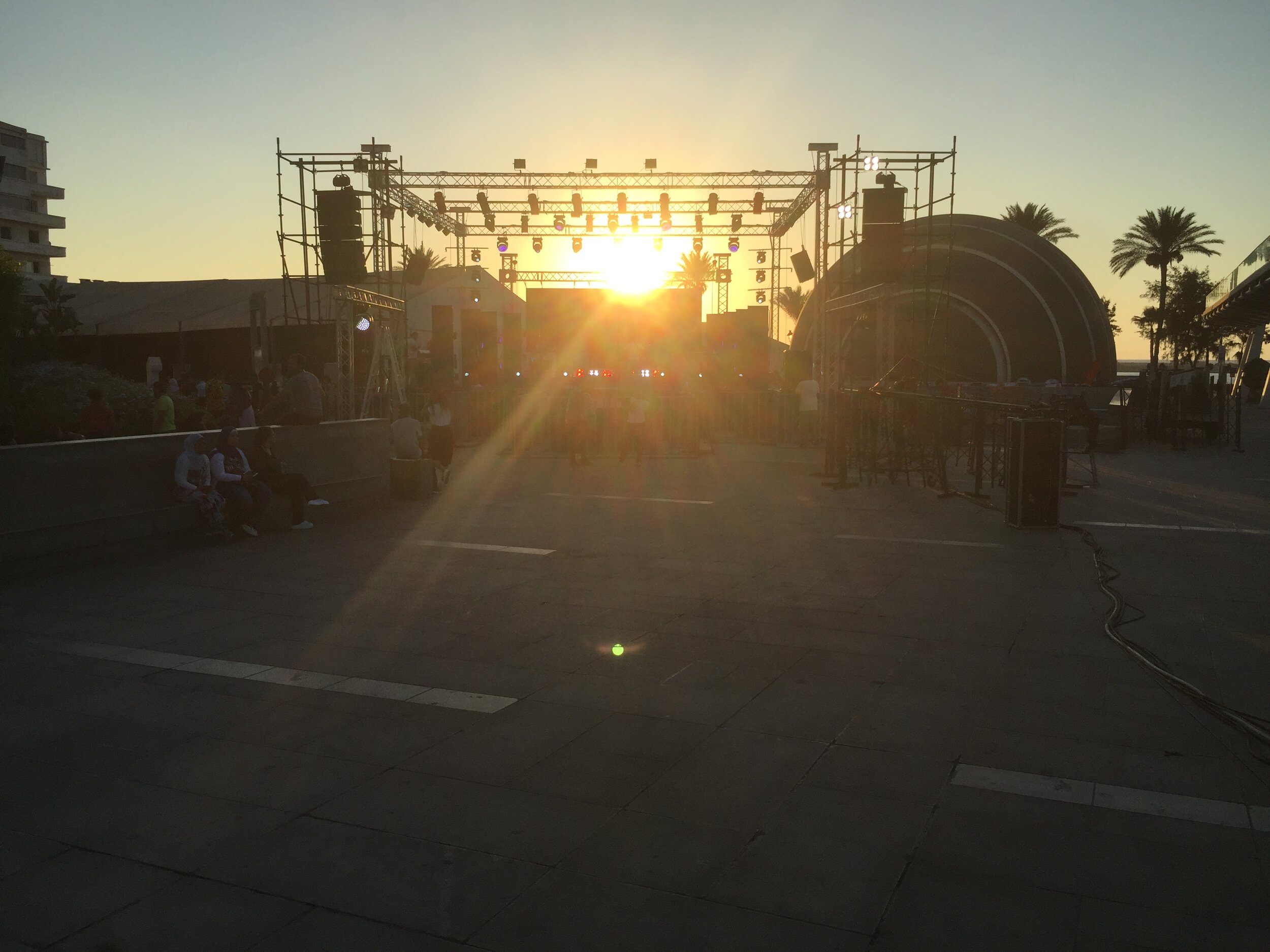Project 13- Massar Egbari
The producer who was my contact for the Cairokee performances also represented another band originally from Alexandria called Massar Egbari. We had talked about collaborating for a while and finally in August of 2019 the opportunity presented itself. They were scheduled to perform at the Alexandria Bibliotheca as part of a summer festival. Since they were originally from Alexandria they are extremely popular there were the main event of the festival. In our conversations about their performance aesthetic my history of creating a more theatrical language was appealing to them. Typically live concerts, not just in Egypt but around the world, are dominated by visual spectacle created by the technology of moving lights. Most often the visuals created by the lights have nothing to do with the music, and the musicians were often left literally in the dark. As with my work with Cairokee, we decided to try and change that. We wanted to try the approach of continuing to do exciting things with the lights, but with the novel approach of doing so while keeping the lights actually pointed at the musicians. I was given the set list and met with the band to continue a conversation on the lighting and staging that was started months earlier. Concurrently to that I was communicating with my associate in Alexandria who had worked with me on Coco and CIFF. Conveniently he was employed at the Bibliotheca as their lighting director. Their lighting and staging setup was minimal so we worked with the Massar Egbari production manager to rent some more lighting equipment and LED screens. This was a very fluid negotiation. As I was Skyping with them I was entering the information directly into my Vectorworks drawing of the space so we knew exactly what was going where. I could then confer with the band and producers to agree on the staging requirements.
Massar Egbari- Alexandria Bibliotheca staging layout
Massar Egbari- staging flyover
Then, over the next couple days, I worked to story board and paper cue as many of the songs as possible. Working on our aesthetic of less lighting spectacle, I went through each song and laid out a simple map of only a few cues for each. I knew that we could add movement and color changes at the venue, but I wanted to make sure this new idea was what was needed. I started working with a program that allows me to put all my notes in one document along with video links, images and handwritten notes. While initially a bit of a mess, I began to give order to the chaos. Below are two screen captures of these initial notes.
Massar Egbari- Set list notes in Curio
Using the combination of the breakdown of the songs and the lights in a virtual environment I began to storyboard some songs. Below is my cue sheet which combines the breakdown of the first song on the program along with visual images to start to explain our visual language.
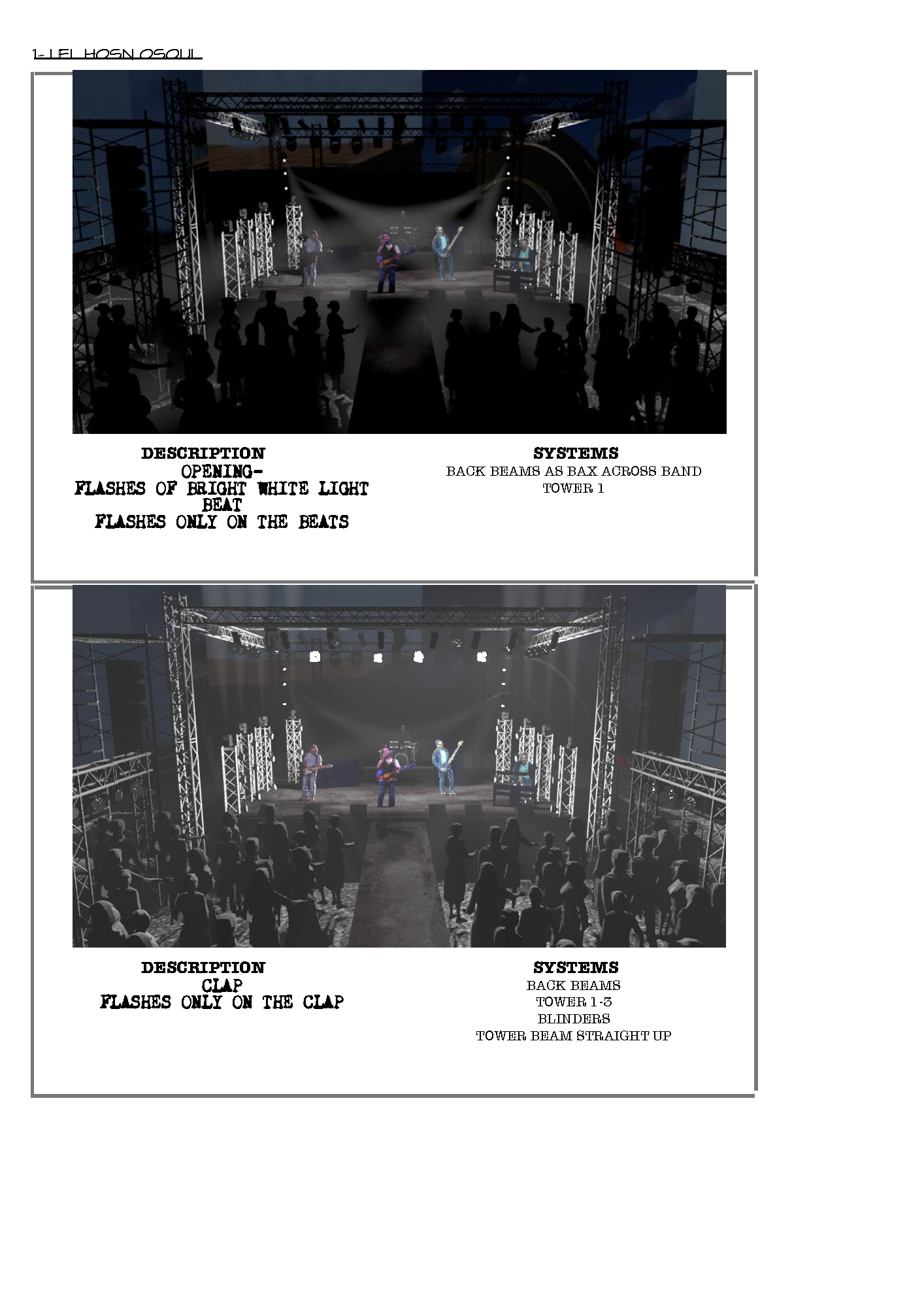
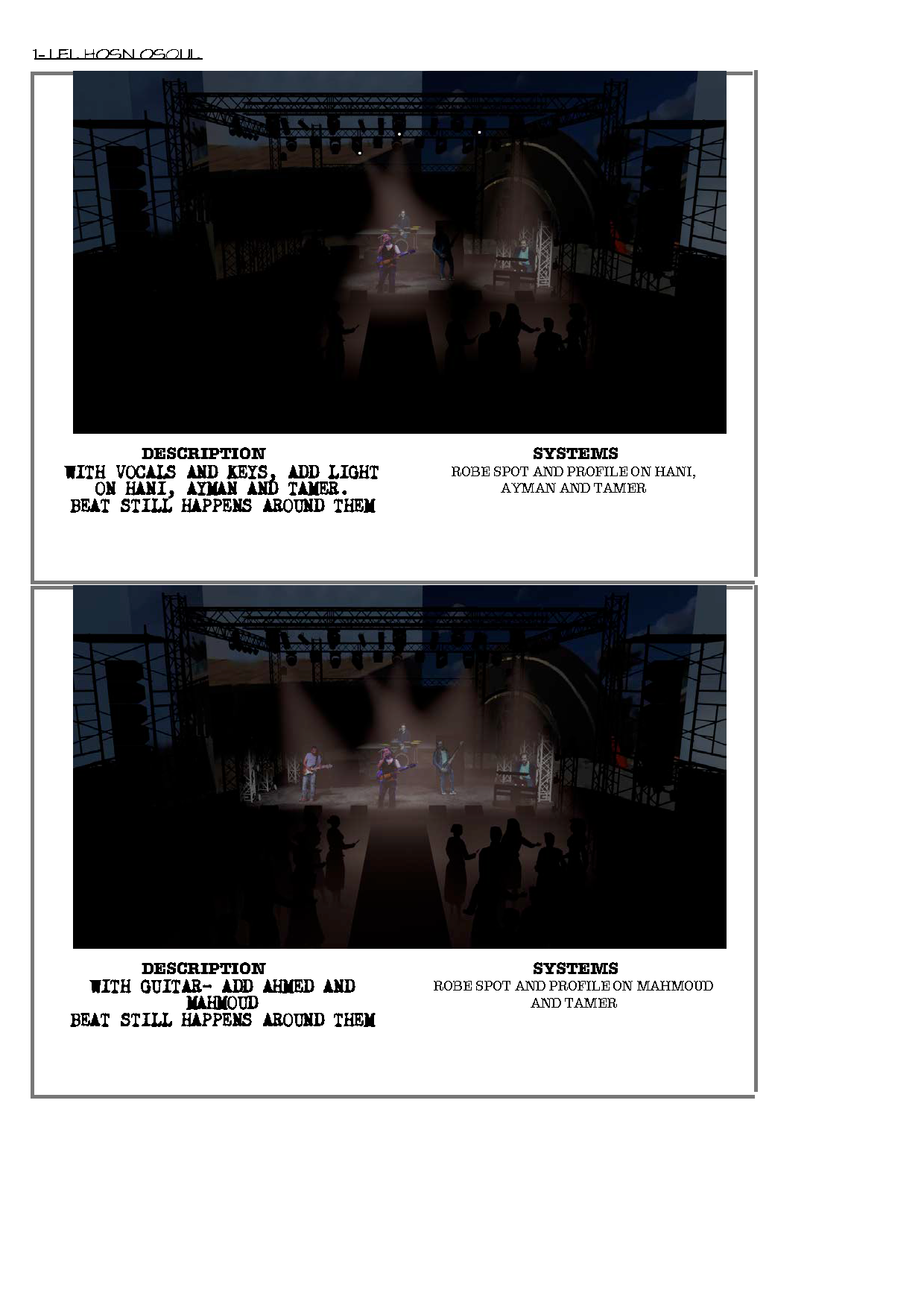
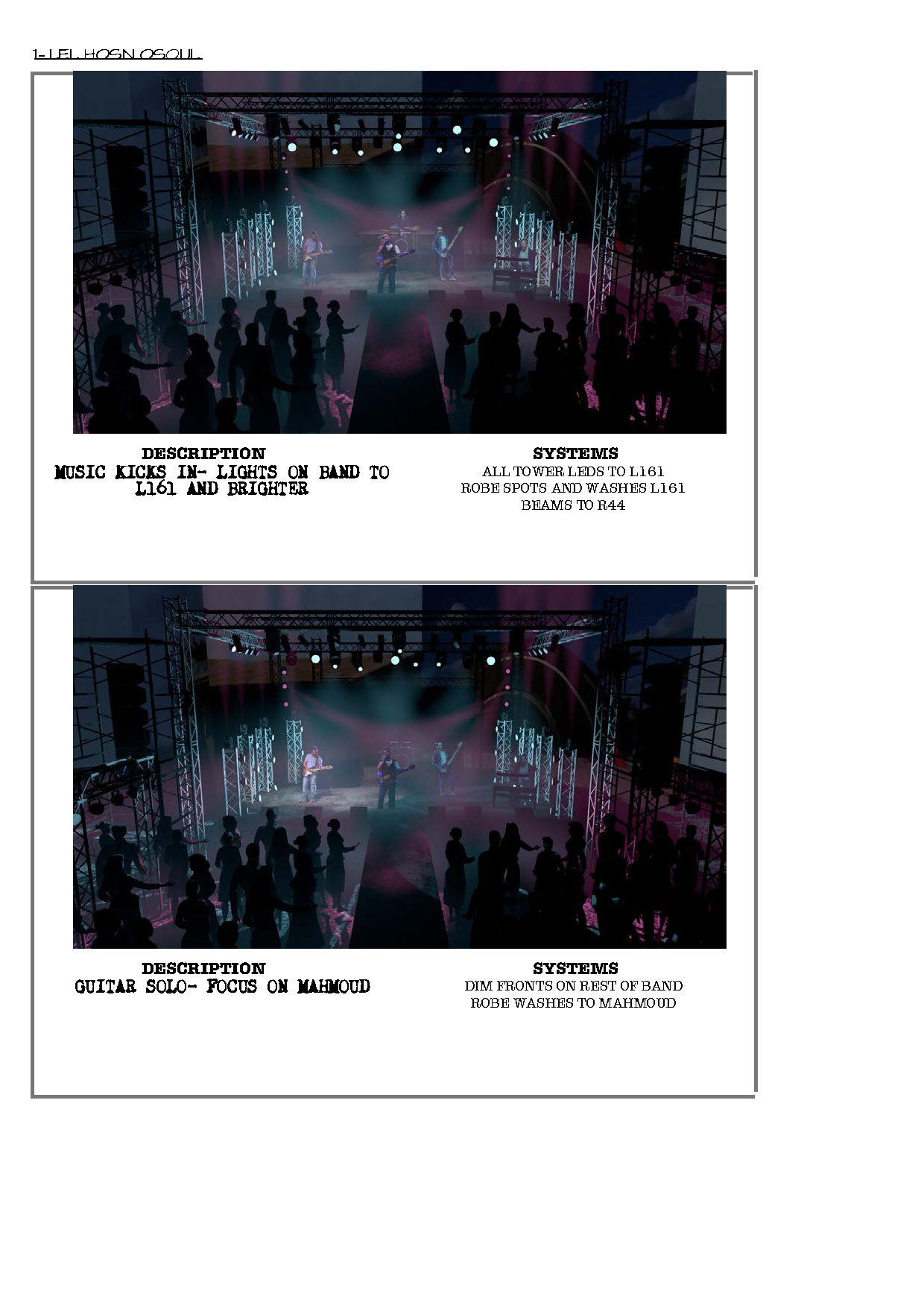
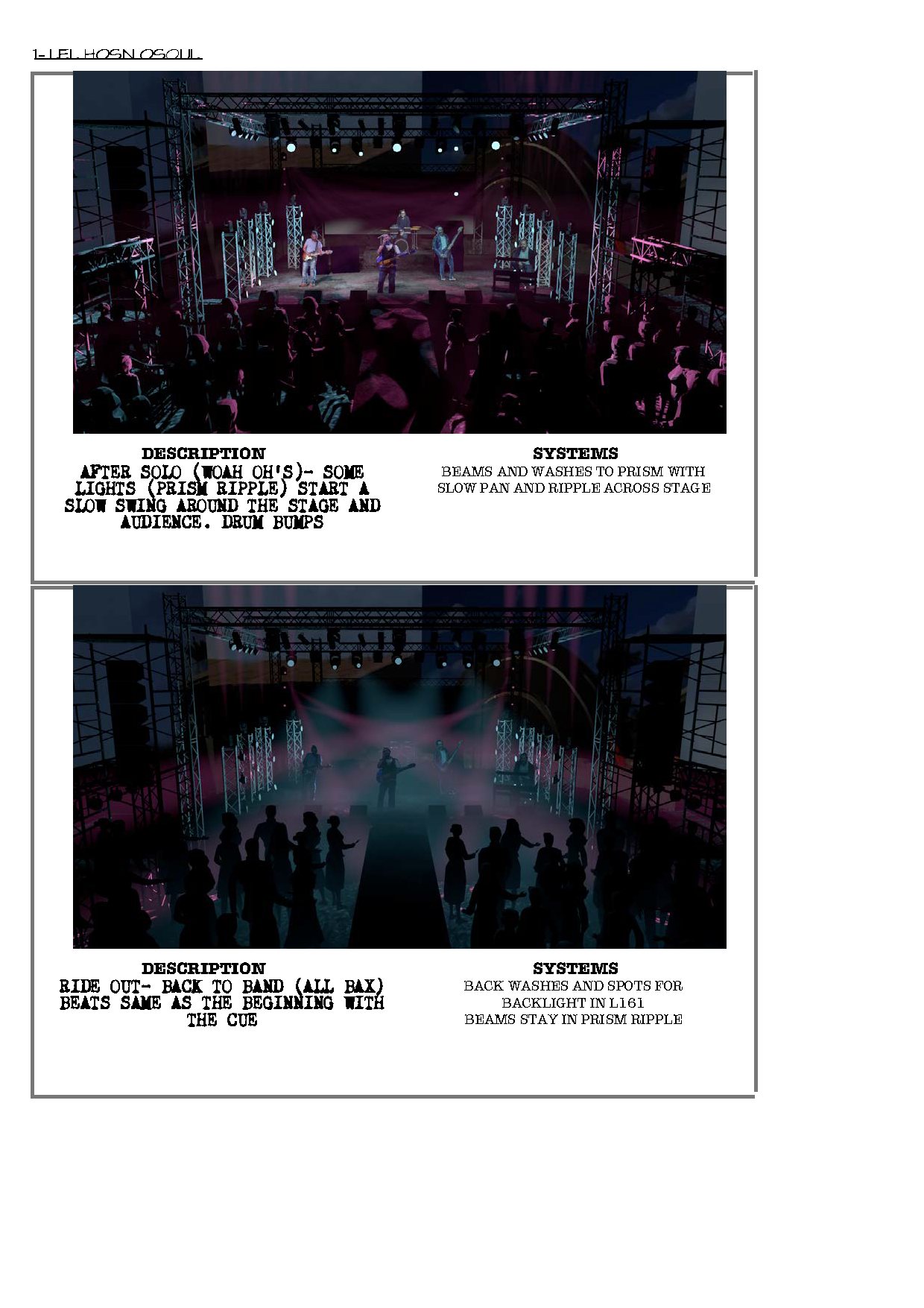
Massar Egbari- Cue list per song in FilemakerPro
Massar Egbari- Magic sheet
(My learning of Arabic is still in process. I created this custom sheet so I could just point to the desired lights and color as a way of communicating to my lighting team better)
One thing that hopefully is apparent in these renderings, and all of my renderings for the past few years for that matter, it that the light coming from the lighting instrument is visible. I don’t mean just the beam of light, but the light at the lens or gel frame of the light, too. This is not a mistake. I’ve worked very hard to make that happen. When a lighting unit is visible to the audience the light coming through the lens or radiating the gel filter is highly visible. The Vectorworks program is incredible in the way it handles the photometrics and predictions of light beams, but it doesn’t show this very real part of the basic physics of how lights work. In a situation like this all of the lights are exposed to the audience. To not accurately depict the bright light source at the lens would not be truthful to what the real life image would be. For the past few years (once I eventually figured out how to make it work in the program) I have been pleased with the end rendering effect because I can show directors, producers, choreographers and rock-and-rollers as honestly as possible what the lighting will look like in real life. I know it may seem inconsequential to most, but it is essential to my integrity as an artist to present the most honest depiction that I can.
In Alexandria I went to the venue about 10pm, just as another concert was finishing. Once that audience was clear I supervised the adaptation of the lights and stage for Massar Egbari’s performance. We finished the staging and lights about 2am and then started writing the cues based on my cue sheets and story boards. The trouble with outdoor venues is that you have to make use of the night because it’s difficult to compete with the sun during the day. We were cueing the last song as the sun was coming up behind the stage.
Massar Egbari- Alexandria Bibliotheca 5:15am
We returned that afternoon for sound check. And in another situation with no rehearsal we started the concert for 5,000 people a little after sun set. One of the main ideas in our new approach was, as I said, to keep the light doing interesting and dynamic things but do this while they are pointed at the musicians. The key to do this was making sure the lights moved and pulsed much slower than in typical concerts, to try and blend the musicality of moving light with the song itself. This was much different than audiences were used to seeing and the way my associate was used to programming. But he trusted me and we began a new form of language together. While there were still some timing issues, the band and producers loved this new visual approach.
My view of the stage and crowd just before the concert started.
A brief moment from the performance
A brief moment from the performance
A brief moment from the performance
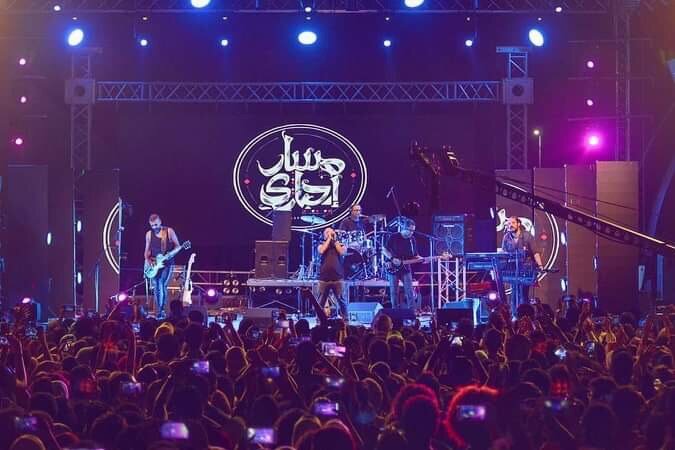
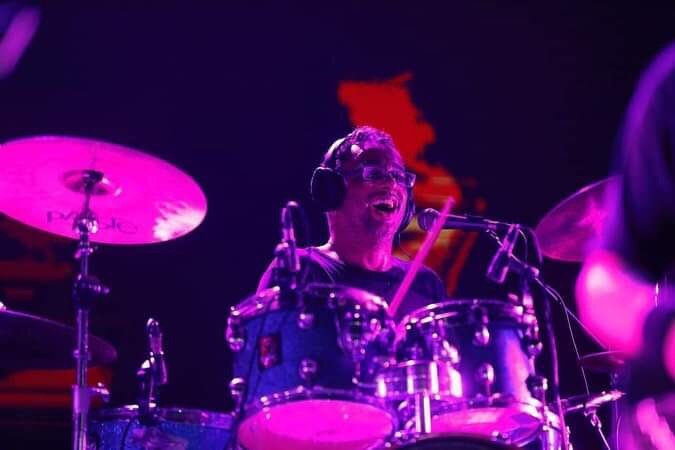
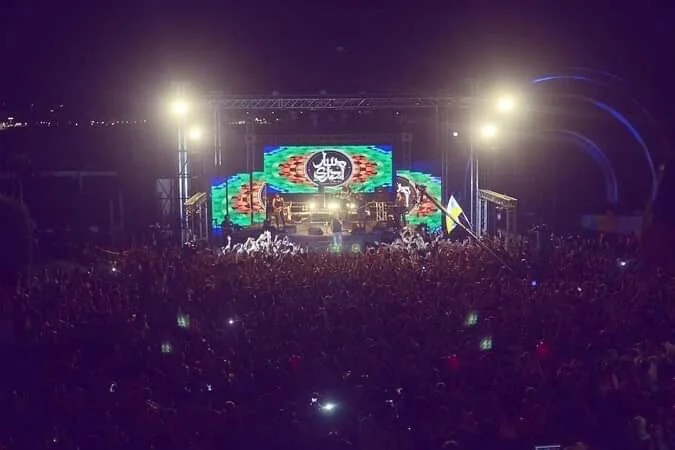
One month later, September 29th, we were in the process of restaging the concert at the Sawy Cultural Wheel. We worked from the same base ideas for the cues but with massive improvements. My associate and I had spent the entire day from 7am with the production team setting everything up. During the day we rehearsed some sections with the band during sound check to improve our synchronization. I even helped the video designer with videos that blended more with the lights to create a more cohesive feel. The band was set to take the stage at 7:30. At 7:15, for reasons that cannot be discussed here, the event was cancelled and the whole center area of Cairo was closed off. The concert was done again several weeks later, but due to my commitments at AUC’s production of Electra, I couldn’t be part of it. My associate, with the memory stick from our previous attempt, was able to recreate the lighting cues and I hear the concert was incredibly well received. The cue sheets and storyboards have accompanied the band on several international tours since then, and their new lighting aesthetic is setting them apart from the majority of other bands at their level.
